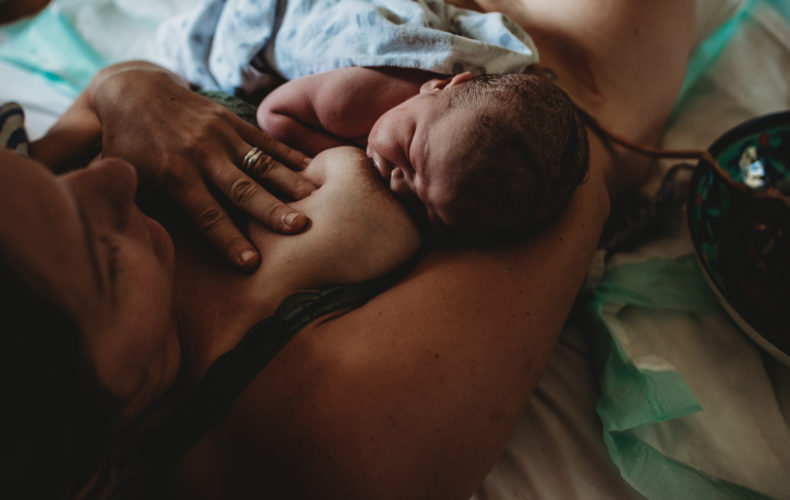In a culture as widely devoid of postpartum ritual like we are here in the United States writing and sharing our birth stories begins to fill that gap of how we introduce our children and our new identities to our Village. Not only is our culture desperately in need of hearing and celebrating a wide range of normal human birth, but telling our stories is helpful for processing this single vivid experience that changes our lives forever.
Have you ever wanted to write your birth story but felt stuck or overwhelmed? Use this guide to break it down into manageable steps.
How to Write Your Birth Story
1. Do it as soon as you can. I know, there’s a lot going on as brand new parents but the details fade surprisingly quickly. That said, it’s never too late to get started. Partners, too, should take the time to write out the story from their perspective, but try not to corroborate stories at this stage.
2. Get in the headspace. Quiet moments are hard to come by when you have a newborn but eliminate distractions while you do this. If it feels safe to return to the birthroom in your memory you can let your senses help by cranking your labor playlist, sniffing the oil you had diffusing, and have a calming cup of tea nearby. Be prepared to feel strong or conflicted emotions and be gentle with yourself.
3. Write down as much as you can as quickly as you can. This is a rough draft so don’t worry about the storytelling, or getting the timeline and details perfect, just get the bulk of the story down onto paper. Focus on the big moments and how you felt. Dictating to someone or a talk-to-text app is a great way to get it out hands-free. DON’T judge. This is important. Let the story come as it will and try not to judge actions or feelings along the way just get it out. Write about the good, bad, ugly, beautiful, scary, triumphant, grueling, dark, powerful and the joyful parts. Take as much time as you need between this step and the next.
4. Enlist other perspectives. Yours is the most important story and you do not need to include the input of others. But asking your partner, your provider, your doula, your birth photographer or others for their viewpoint can lend missing context to your own experiences especially when it comes to nailing down blank spots in your timeline. Phone calls, text messages, your contraction timer and photo timestamps can help, too. You might also consider asking for your medical records. Add any details you want to your notes but keep in mind that you are not required to change your truth based on anyone else’s perspective.
TIP: Consider asking a member of your birth team ahead of time to write down the times of important moments during labor as long as it doesn’t distract them from supporting you.
5. Reflect. Spend time thinking about how you felt during all the key parts of labor, about the birth in the context of your pregnancy, the immediate postpartum, your relationship with your partner and your experience as a parent. Where were the highs and lows? Use our Birth Debrief to guide you through reflecting on your birth. Again, don’t judge and be so very gentle with yourself.
6. Collect and edit. Now bring it all together. Start with a timeline of events, use our Birth Timeline Prompts to help jog your memory. Take all of the details you’ve gleaned so far and edit, clarify, and piece it all together. Add as much or as little detail as you want. This step can take as long as you need.
7. Share, but only if you want. As much as our culture needs real, normal birth education no one is owed the story of your baby’s arrival and your birth into parenthood, so share only as you desire and feel safe doing so. Ultimately, this story is for you and your benefit.
Those who do want to share with a wider audience are invited to submit stories to our Community Birth Stories Project.
This post is part of our Birth Stories series:
How to Debrief Your Birth | Birth Story Timeline Prompts
Photo: BergenHowlett.com

